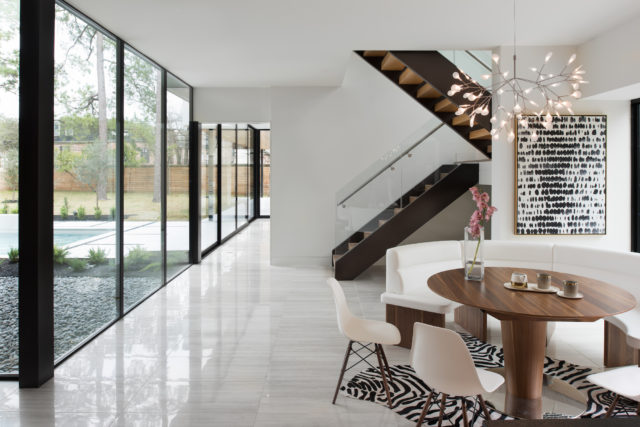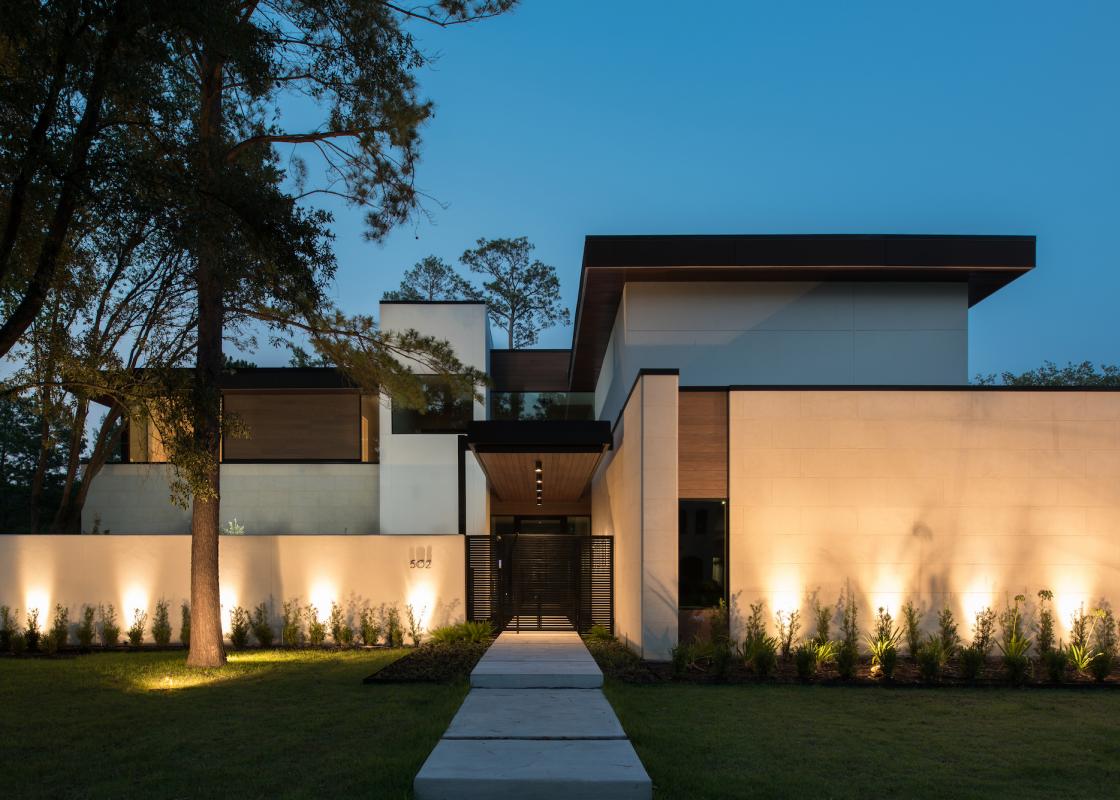Rice Design Alliance is holding its 2018 architecture tour April 7-8 and publishing this series of edited interviews on the theme "Balance: Celebrating Women in Design." Florence Tang is a project manager at Kendall/Heaton Associates. She is a featured designer on the upcoming architecture tour for her prior work at StudioMET Architects on 502 Pinehaven.
Cite: How did you come to architecture and design?
Florence Tang: I came into architecture as my second career. My first career was in the newsroom. As journalists, we are always seeking to understand and to give a voice to the voiceless. As a practitioner in architecture, I have translated those skills in terms of understanding issues that are very complex. You are almost always on a tight deadline. You have to somehow distill these really complex topics into bitesize pieces sometimes.
Now I am balancing both of my worlds of media and architecture with studio time at Kendall/Heaton for projects as well as making time for deeper dive articles about urban planning, major projects, and city profiles for The Architect's Newspaper and Texas Architect.
Using my daily newsroom skills and ability to translate spatial infrastructure into layspeak, I was able to work quickly with a great team — Andrew Albers, Ernesto Alfaro, Evan O'Neil, Raj Mankad, and Allyn West — to produce a story explaining how the Addicks and Barker dams work for Cite and the Houston Chronicle's Gray Matters in the immediate aftermath of Harvey. When the assignment came my way, I was under mandatory evacuation. I interviewed the Army Corps of Engineers, wrote the story within a few hours from a storage closet at my friend's house, and was coordinating the facts and graphics with the team via laptop. And then my power got cut and I had to rely on my phone and sat in my car charging it praying the edits would go through so we could get the story out. Looking back, we were six adults and five kids all together in one house during that sleepless week.
Cite: How has your educational journey and training as a professional journalist influenced your career?
I didn't always set out to be on this architecture and planning path. The Houston Chronicle, The Facts in Brazoria County, and my college paper The Trinitonian at Trinity University in San Antonio are the newsrooms where I was baptized by fire before embarking on my architecture path. One summer between my sophomore and junior year, I went to Harvard to study architecture and was fortunate to have been taught by Matteo Scagnol, an Italian graduate student who was super patient and took us on walking tours of Boston and Cambridge. We learned to study the city blocks and buildings, trees and leaves, and patterns of how people used spaces. I remember sitting and drawing buildings and people in Copley Square for hours, staying in the law school dorms, running around the Charles River, Harvard Square and Le Corbusier's Carpenter Center, and experiencing the desk crits and pin ups. I learned how to really defend and express ideas with words and drawings. Then I went back to San Antonio to be editor-in-chief of my college publication and finished my communication/media major. I didn't really know when I would pick up architecture again.
After graduation and moving back to Houston, I met a young engineer, we got married, and with my husband's encouragement, I quit my night editing job at the Chron to pursue graduate studies full-time at Rice Architecture. After the first year, I worked at the Chron during the summer and also went overseas to build schools in the jungles of the Mekong River Delta region in southern Vietnam with Sunflower Mission, a grassroots non-governmental organization. Traveling the river and experiencing life on the water shaped my thinking and deeply impressed upon me the similarities between that region of the world and Houston's bayous. My thesis 10 years ago was about flooding, and just last year, I was the tour chair for the Rice Design Alliance architecture tour about living in floodplains not long before Harvey hit. For my thesis, I studied with Eva Franch i Gilabert, Blair Satterfield, and Farès El-Dahdah.
 502 Pinehaven interior. Photo: Ayala Vargas Photography.
502 Pinehaven interior. Photo: Ayala Vargas Photography.
Cite: Not many years ago, design and architecture were considered by policy-makers to be “added value” and not essential elements to efficient planning of communities. From your experience as a designer and journalist, do you think that has changed?
FT: In Houston, and San Antonio, I have seen mayors, planning directors, planning commissioners, and city councilmembers realizing that the success of a city is more than being an economic hub with highways. They are recognizing that a plan with citizens' input is critical to the will and future of neighborhoods and communities. A city has to be a desirable and healthy place to live with parks, trails, museums, and amenities with a cultural identity and meaning. There are complex and intricate layers to the growth of Houston and San Antonio and it's completely riveting to me. I have an ocean of appreciation for all the dynamic and static forces acting upon our wildly unique terrain in Texas.
Cite: What advice would you give an aspiring journalist today? What is something that you wished you had been prepared for that now is vital in your current career?
FT: You must learn to read and write critically. Reporting means digging and being skeptical. I think I had pretty amazing training grounds that have allowed me to strike a balance in all of my pursuits. Building your trusted sources is crucial in any field and I learned that lesson early on. Chase what gives you energy.
Cite: What advice would you give to young people thinking about architecture?
FT: I want to encourage all boys and girls that being an architect, being a designer, being an engineer, being a general contractor, is great fun. It is challenging but it is also imagining the possibilities, understanding our existing conditions — what can we do to improve our quality of life, to be more collaborative and learn from each other, and understand what our clients really do want and what our cities need.
Brenda Cruz-Wolf is the videographer for Balance. She, Angie Chen, and Nathaniel Ramirez contributed to the interview.










